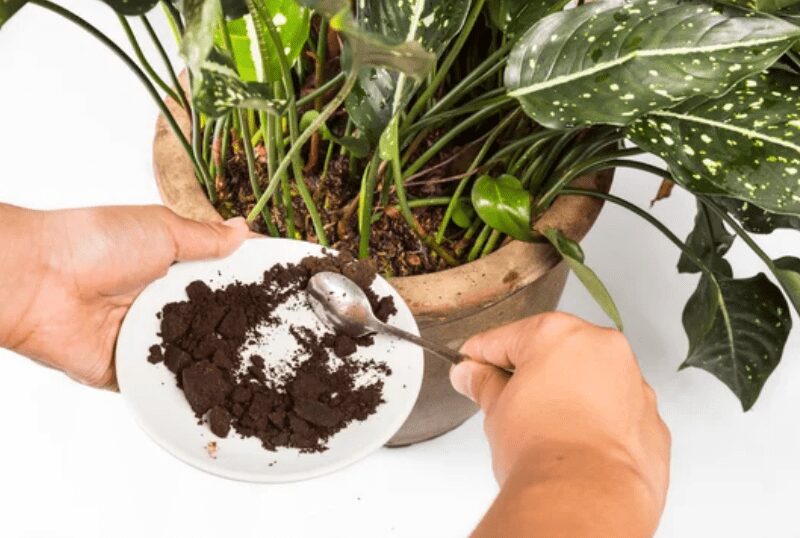
Coffee lovers know the joy of a fresh cup of joe in the morning. But what do you do with those coffee grounds once you’ve brewed your perfect cup? Tossing them in the trash is one option, but using them in your garden is a better alternative. Yes, you heard it right: coffee grounds for plants can be a game changer!
Coffee Grounds For Plants Indoor and Outdoor
Coffee grounds can benefit almost any plant, whether you have an indoor green sanctuary or a sprawling outdoor garden. Used coffee grounds for plants are commonly added to the soil as a natural fertilizer. They are trendy among people who prefer organic gardening practices.
Coffee Grounds For Plants and Flowers
For flowering plants, coffee grounds can play a crucial role in helping your blooms thrive. They not only provide essential nutrients but also help to improve soil structure. This makes it easier for the roots of the plants to grow and absorb nutrients. Roses, azaleas, and rhododendrons are flowering plants that especially love coffee grounds.
Coffee Grounds for Plants Indoor
Indoor plants can also greatly benefit from coffee grounds. The grounds help in moisture retention, and, in turn, this helps indoor plants, which might not be watered as frequently as outdoor ones.
Can You Use Coffee Grounds for Plants?
Absolutely! But it’s essential to use coffee grounds for plants correctly. Simply sprinkling them over the soil might not be enough. Mix them into the soil or use them as a part of your compost mix.
How to Use Coffee Grounds for Plants
There are several methods of using coffee grounds in your garden:
- As a Fertilizer: Mix the coffee grounds into the soil. The grounds are rich in nitrogen, an essential nutrient for plants.
- As a Mulch: Spread a thin layer of coffee grounds on the topsoil around your plants. This helps in moisture retention and prevents weeds.
- In Compost: Add coffee grounds to your compost heap. This enhances the nutrient content of your compost.
- Pest Deterrent: Coffee grounds can deter certain pests like ants and slugs. Sprinkle them around your plants to keep these critters at bay.
Eggshells and Coffee Grounds for Plants
For an extra boost, consider adding crushed eggshells with the coffee grounds. Eggshells are rich in calcium and work well with the nitrogen in coffee grounds. This mixture can be especially beneficial for plants like tomatoes which thrive on calcium.
How Much Coffee Grounds for Plants?
While coffee grounds can be fantastic for plants, moderation is key. A general recommendation is to add a ratio of 1 part coffee grounds to 3 parts soil. Adding too much can make the soil overly acidic, which may not be suitable for all plants.
Unused Coffee Grounds for Plants
While used coffee grounds are more common, unused grounds can also be used. However, they are more acidic and should be used sparingly and usually with plants that prefer a higher acidity, like blueberries.
Coffee Grounds for Plants Benefits
- Enhanced Soil Structure: Coffee grounds improve soil aeration and water retention.
- Nutrient-Rich: They are rich in nitrogen and contain potassium, phosphorus, and other trace minerals.
- Pest Control: They can help keep pests like ants, snails, and slugs away from your plants.
- Disease Prevention: Certain compounds in coffee grounds have antimicrobial properties that help prevent fungal diseases.
Conclusion
In conclusion, coffee grounds can be valuable to your gardening routine. Whether you’re looking to enrich the soil of your outdoor flower bed or trying to give some TLC to your indoor foliage, coffee grounds might be the secret ingredient your plants need. Just remember to use them wisely and in moderation. Your plants will thank you!






















